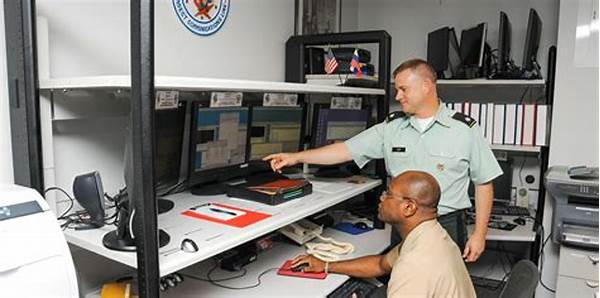The Importance of Collaborative Efforts
In the era of global interconnectedness, the specter of nuclear conflict remains a paramount concern for international security. Collaborative nuclear risk reduction strategies are pivotal in mitigating potential threats and ensuring peace. These strategies necessitate concerted efforts from nation-states, international organizations, and civil society to collectively address the complexities of nuclear risks. By fostering dialogue, enhancing transparency, and building trust among nations, such strategies aim to avert the escalation of nuclear confrontations. Furthermore, they involve establishing and implementing treaties and agreements designed to curb nuclear proliferation, thus ensuring a safer world. The imperative to collaborate in this domain stems from the acknowledgment that unilateral actions are insufficient in addressing the multifaceted challenges that nuclear weapons and technologies pose.
Within the framework of collaborative nuclear risk reduction strategies, it is essential to prioritize diplomatic engagements that focus on disarmament and non-proliferation. Engaging key nuclear-armed states in dialogues that promote understanding and consensus is crucial. Additionally, international forums play a significant role in facilitating negotiations and creating platforms for cooperation. The involvement of scientific communities and experts in these discussions further aids in crafting evidence-based policies and technological solutions to manage nuclear risks effectively. The global community must also commit to supporting initiatives that promote secure nuclear materials and technologies, thereby reducing the risks associated with nuclear terrorism.
In this context, collaborative nuclear risk reduction strategies not only target the direct risks associated with nuclear weapons but also address the underlying factors that exacerbate tensions. Socio-political dynamics, regional conflicts, and historical grievances need to be identified and managed through comprehensive strategies that encourage reconciliation and confidence-building measures. Ultimately, the success of these strategies hinges on the sustained commitment and cooperation of all stakeholders, reinforcing the notion that peace and security are collective responsibilities.
Strategies for Effective Implementation
1. International Treaties: Collaborative nuclear risk reduction strategies often involve negotiating and enforcing international treaties aimed at non-proliferation and disarmament, such as the Treaty on the Non-Proliferation of Nuclear Weapons (NPT).
2. Confidence-Building Measures: Establishing mutual trust through confidence-building measures is essential in collaborative nuclear risk reduction strategies, allowing for transparency and verification among nations.
3. Bilateral and Multilateral Dialogues: Engaging in dialogues, both bilateral and multilateral, forms a core aspect of collaborative nuclear risk reduction strategies to resolve tensions and prevent escalation.
4. Technological Safeguards: Implementing advanced technological safeguards is integral to collaborative nuclear risk reduction strategies, ensuring nuclear materials and facilities are secure and less prone to misuse.
5. Engaging Non-State Actors: Collaboratively involving non-state actors, including NGOs and think tanks, in shaping nuclear policy is crucial to comprehensive nuclear risk reduction strategies.
Challenges and Opportunities
The execution of collaborative nuclear risk reduction strategies is beset with challenges and laden with opportunities. Chief among these challenges is the divergent national interests and security paradigms of nuclear-armed states, which often complicate consensus-building. Additionally, geopolitical tensions inhibit effective collaboration, while technological advancements in armament development add layers of complexity to risk mitigation efforts. However, these challenges are not insurmountable. They present unique opportunities for diplomatic innovation and fostering diplomatic relationships.
Coordinating international efforts offers significant opportunities for strengthening global governance structures. By enhancing mechanisms for verification and compliance, fostering intelligence sharing, and supporting the peaceful use of nuclear technology, stakeholders can collectively surmount the obstacles to effective risk reduction. The opportunity to develop new legal and policy frameworks that address contemporary nuclear risks is another potential benefit of collaborative nuclear risk reduction strategies. This involves leveraging emerging technologies for surveillance and control to ensure robust and resilient systems are in place to detect and counter nuclear threats.
Building Resilient Institutions
Implementing collaborative nuclear risk reduction strategies requires resilient institutions capable of responding to evolving threats. Such institutions are underpinned by robust legal and policy frameworks that prioritize nuclear safety and security. Strengthening these frameworks through international cooperation and adherence to the rule of law is essential to institutional resilience. Additionally, institutional capacity-building through training and education initiatives empowers personnel to effectively implement and monitor nuclear safeguards.
Furthermore, fostering collaborative partnerships among governmental bodies, international organizations, and academia enhances institutional capabilities. By pooling resources and expertise, institutions can develop innovative solutions to combat nuclear risks. It is imperative that institutions remain adaptable, continuously refining their strategies in response to emerging challenges and technological advancements. Ultimately, resilient institutions are foundational to the success of collaborative nuclear risk reduction strategies, ensuring a comprehensive and sustainable approach to mitigating nuclear threats.
Technological Advancements and Risk Management
Technological advancements present both challenges and solutions for collaborative nuclear risk reduction strategies. On the one hand, advancements in nuclear technology can exacerbate risks by enabling the rapid development of sophisticated weapons systems. On the other hand, these same advancements can enhance efforts to manage nuclear risks through improved detection and verification mechanisms. For instance, satellite imagery and artificial intelligence can be harnessed to monitor compliance with international agreements and detect illicit nuclear activities.
To harness these technological advancements effectively, cooperation among nations is vital. Sharing technological expertise and best practices contributes to the global effort to reduce nuclear risks. Additionally, investing in research and development to create innovative risk management technologies is crucial. Such investment must be accompanied by robust regulatory frameworks that ensure the ethical use of technology and prevent its misuse. Collaborative nuclear risk reduction strategies that leverage technology are positioned to address both present and future nuclear challenges.
The Role of Civil Society
Civil society plays a crucial role in advancing collaborative nuclear risk reduction strategies. By advocating for disarmament and non-proliferation, civil society organizations raise awareness of nuclear risks and exert pressure on governments to act. These organizations also provide platforms for dialogue and research, contributing valuable insights to policy discussions. Engaging the public through education and outreach initiatives fosters a culture of peace and security, encouraging citizens to support nuclear risk reduction efforts.
Moreover, civil society’s involvement ensures accountability and transparency in governmental actions. By monitoring compliance with international treaties and agreements, these organizations hold states accountable for their commitments. Collaborative partnerships between civil society and governments enhance the effectiveness of collaborative nuclear risk reduction strategies by integrating diverse perspectives and expertise. Ultimately, the success of these strategies relies on a vibrant civil society that actively participates in shaping the nuclear security landscape.
Conclusion and Future Directions
In summation, collaborative nuclear risk reduction strategies are indispensable for maintaining global peace and security. These strategies require the integration of diplomatic, technological, and institutional efforts to address the multifaceted challenges posed by nuclear risks. While the path to effective implementation is fraught with obstacles, the potential rewards of enduring peace and security are compelling incentives to persist in these efforts. As we look forward, it is imperative to sustain international cooperation and engagement.
Future directions in collaborative nuclear risk reduction strategies must embrace innovation, adaptability, and inclusivity. By continuously refining approaches and inviting diverse stakeholders to contribute, the global community can pave the way for a safer nuclear future. Emphasizing education and engagement will empower the next generation to uphold and advance these critical strategies. Ultimately, the collective commitment of states, organizations, and individuals will serve as the bedrock for a world where the threat of nuclear conflict is significantly diminished, and collaborative nuclear risk reduction strategies are fully realized.





